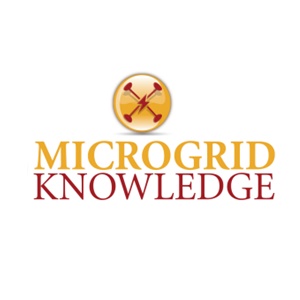Community Microgrids with Energy Storage: Cost Effective and Clean

New Ameresco energy storage VP Jacqueline DeRosa highlights how the dropping price of energy storage has positioned communities to take advantage of new microgrid models. Community microgrids with energy storage serve to enhance grid reliability, security, and efficiency.
The growth of distributed resources is forcing utilities and grid operators to transition from standard operations to more decentralized power systems. Already, local and clean distributed resources can directly provide a local community’s energy needs. Distributed renewable energy paired with energy storage is not just technically feasible, but also cost-effective for many applications today. New predictive analytics can optimize the use of solar, advanced energy storage, energy efficiency, and other resources to allow communities to procure renewable, low-cost energy and maintain reliability.
While many microgrids to date have been built to serve a specific self-contained campus or large customer, community microgrids combine these new solutions to ensure resilient electric power service to a wide range of customers within a local community when the electricity from the bulk power system is unavailable during a disaster, such as a fire, flood, or a hurricane. These microgrids can also facilitate the integration of local clean energy among an interconnected load from a city, town or neighborhood during non-emergency times.
The main technology enabling the growth of community microgrids is lithium-ion batteries, whose costs have dropped by about 80 percent since 2010. According to the December 2018 BNEF Brief, the “volume-weighted average price of a lithium-ion battery pack is $176/kWh”. The same report stated that “the has price dropped 18 percent since 2017.” This trend is expected to continue with an even more significant decline in the next few years. One reason for this dramatic decrease in price is the growing electric vehicle sales that have prompted the development of giga-factories worldwide and have boosted the economies of scale for lithium-ion battery solutions, thus driving down prices for grid-connected batteries. According to Wood Mackenzie’s latest forecast, about 4 GW of energy storage projects are projected to come online in the United States by 2023.
Technological advances and new business solutions have also expanded the services that energy storage can provide for communities. Given the ease of installation and modular design, stationary storage projects are being developed for diverse applications, including peaker power plant replacement, load following, ancillary services, distribution deferral, and customer bill management. Because energy storage projects can quickly be sited and sized to any level, they can be located and interconnected at a consumer site, near other generation, or near a substation. With its pronounced drop in price, longer duration battery storage can now provide resilience in times of an emergency when there is a prolonged grid outage. A microgrid with energy storage can instantaneously respond and replace the need for traditional backup power systems for when the grid goes down.
Regulatory efforts are also underway in many regions to revise distribution level tariffs to value the services that energy storage resources are providing, such as voltage support, power quality services, and distribution investment deferrals.
Despite the technological feasibility of these applications, utility and system operator rules and regulations defining the boundaries, ownership, interconnection, operations, and rate structure for a community microgrid are still evolving. Many existing regulations are outdated and are creating barriers to development. Utilities and state regulatory commissions, therefore, are examining new ways to model and monitor distributed resources to avoid unanticipated power flows and grid instability. Fortunately, several utilities – both public and private – are beginning to model and advance visibility to the distributed grid.
Regulatory efforts are also underway in many regions to revise distribution level tariffs to value the services that energy storage resources are providing, such as voltage support, power quality services, and distribution investment deferrals. Unfortunately, a mechanism to evaluate and compensate for resiliency services does not yet exist in most regions, even though microgrids are already serving many communities well during emergencies; for example, a cogeneration system at New Jersey’s Salem Community College allowed the campus to provide the county’s only functioning Red Cross emergency shelter during Superstorm Sandy in 2012. Progress is also being made on this issue in some jurisdictions, and new microgrid tariffs are being created.
Communities that are seeking clean solutions for their local power needs should not be deterred by market design and regulatory hurdles and can instead proactively pursue development and deployment of cost-effective storage solutions with the use of local microgrids and community microgrids with energy storage. As was described in an article in Microgrid Knowledge published in February 2019, starting the development of a microgrid can be streamlined with the right approach and with the assistance of qualified energy services providers. Community leadership is well positioned to trigger the development of a local microgrid. The first step is to understand and evaluate their communities’ priorities. These can include a preference for renewable energy, the importance of resiliency, and stronger economic development. The next step is to assess whether these goals are being achieved with traditional business practices and if a new tactic is needed. With the realization that the price of energy storage continues to drop and the technology has advanced, local communities are well positioned to pursue new microgrid models to enhance grid reliability and security while utilizing local renewable power more effectively.
4 March 2019









